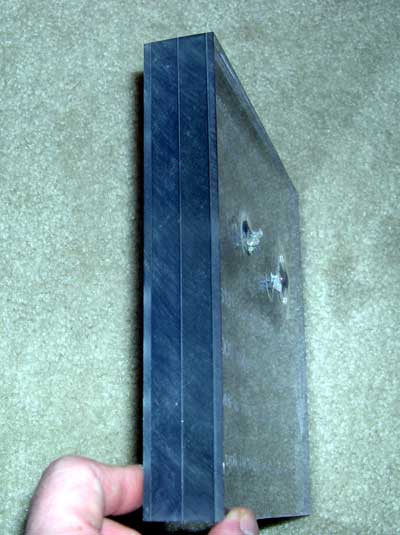[QUOTE=Pwoolson] Terry, Lexan is your friend. [/QUOTE]
Most of the time I would agree with that statement. Here is a pic of double layer Lexan stuck together with CA. It was cut on a tablesaw and as you can see, it is very clean and would make great jig material. Of course, Lexan can also be your friend if you're being shot at. The bullet holes in the pic come from a 7.62 and 5.56 round I shot from 25 feet away. As you can see, it easily went through double layer lexan. The shot of the very right was from a low-calibre handgun, and if you look close, you can see the slug imbedded in the lexan. With a rifle shot, the bullet gets slowed down just enough to shatter and maim or stay impacted versus going through clean. Of course this really isn't an issue unless somebody is trying to shoot up all your guitar jigs. I hate it when that happens.



Cheers!
John

